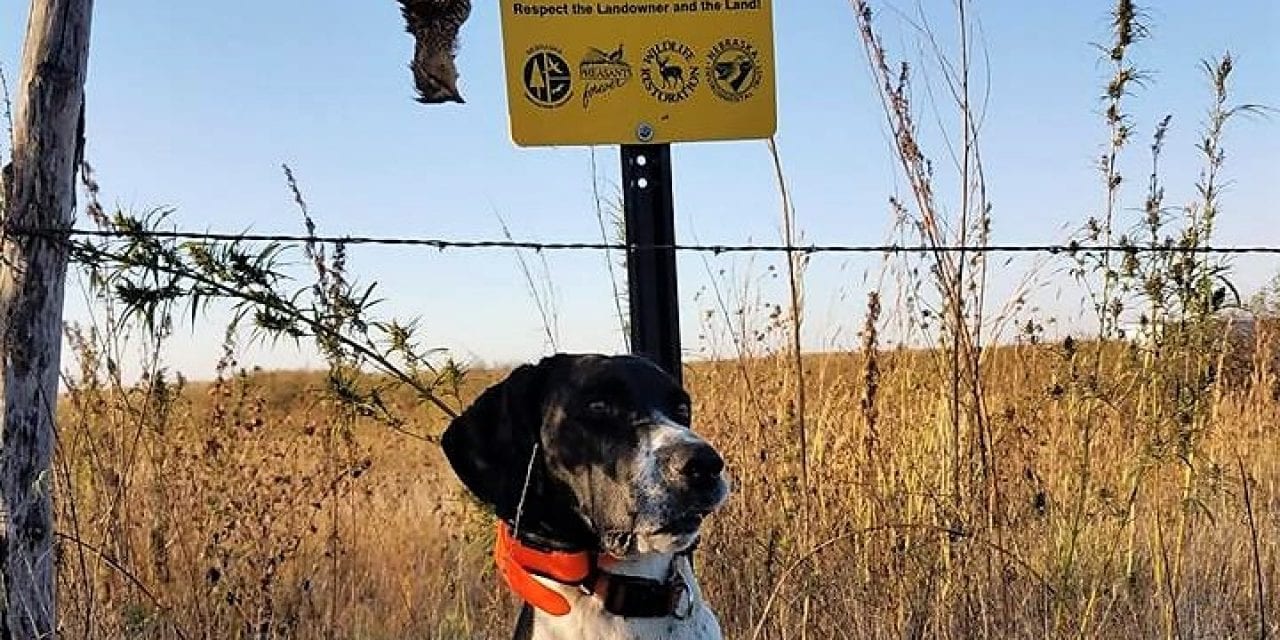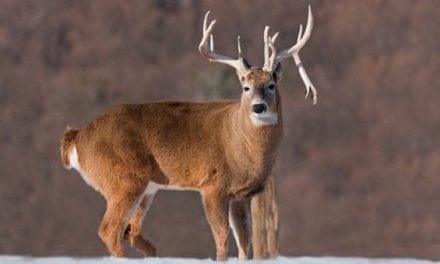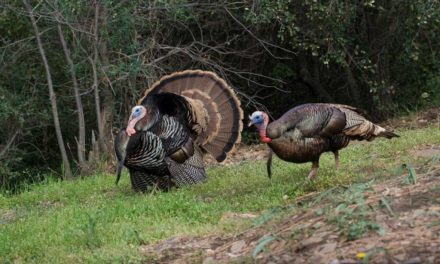Hunting public lands.
It can be a real challenge.
Why?
In a state like Nebraska the overwhelming majority of our total land acreage is privately owned (97%) with only a small percentage of it open to the public (3%).
However, Nebraska’s array of public lands offer a wide variety of opportunities for hunting different game species.
And there is some good news.
John Laux, Upland Habitat and Access Program Manager for the Nebraska Game and Parks Commission’s Wildlife Division, points out currently, there are more than 350,000 acres of private land enrolled in the Open Fields and Waters (OFW) program statewide, which is at an all-time high. This program (OFW) provides financial incentives to private landowners willing to allow public, walk-in access for hunting, trapping and fishing. Collectively, he says, Nebraska has over 1.2 million acres of publicly accessible lands throughout the state.
So how does one successfully pursue wild game birds and animals on one of these publicly accessible lands here in the Cornhusker State?
It doesn’t come easy. It takes time, effort, research and scouting. But, the delicious rewards and indelible memories are worth it!
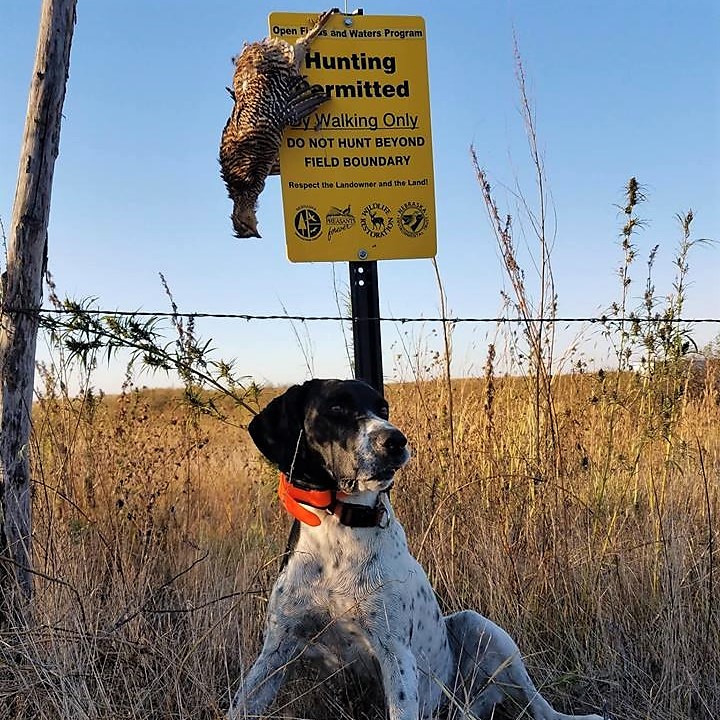
Thus, I offer you a plethora of helpful hints, tons of tips mind you, that I have collected from our wildlife biologists who manage our public lands, public access program properties or the various wildlife species on them.
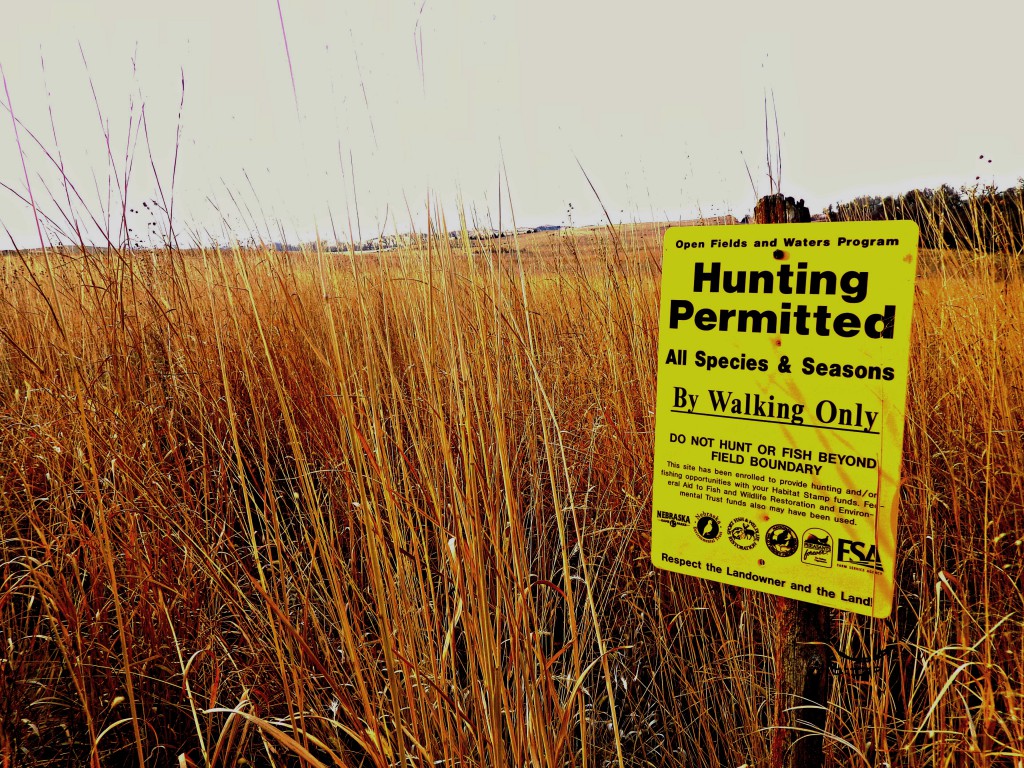
Todd Nordeen of Alliance, big game research and disease program manager for the Nebraska Game and Parks Commission provides the introduction for us. Todd is a longtime commission employee who has served in different capacities and worked across the state.
“The state of Nebraska is approximately 430 miles long and 210 miles wide and within that is a diverse array of wildlife management areas and public lands open to hunting, fishing and a variety of other outdoor recreational activities. The diversity across the state is immense with a variety of habitat types including woodland, grassland/prairie, wetlands, and combinations of varied habitats. Nebraska has over 300 state wildlife management areas as well as many other public lands. In all however, available public access encompasses only about 3% of the land so below are some tips that may help improve your odds for hunting success and quality experiences on public tracts. Good hunting!” — Todd Nordeen.
DO YOUR HOMEWORK
In advance, understand the game species you are planning to hunt and gain knowledge of its seasonal habits and preferred habitats. Closely examine topographic maps, aerial photos and public area maps. Look beyond the public land to check out what the habitat on the surrounding landscape is like. This will assist you in triangulating the best possible location to hunt. Note natural funnels, harvested row crop fields, livestock grazing pastures, existing water sources, etc. Key into those natural transition areas where edge habitat exists or two or more different habitat types meet.
Talk with biologists, field personnel, conservation officers, other hunters, or nearby landowners. Devise a strategy. Plan to make site visits.
PUT FORTH EXTRA EFFORT AND GO THE DISTANCE
Put in the extra effort and legwork, particularly on state wildlife management areas. Consider hiking further, deeper into an area. Get far away from roads, parking lots, signs, and easily accessible areas or those frequented most often by hunters.
Take to the back corners and the odd areas, the out-of-the-way patches of habitat. Wade the creeks, climb the big hills, hit the heavier cover, and go the long distances. You need to get where the other hunters don’t go or haven’t been. It’s best to pick a good vantage point and let other hunters push game to you. Make sure to pack a bag with your essentials for the entire day; plan a longer hunt and make it worth the while.
For deer hunters, escape routes for deer that lead directly into the thickest cover or bramble available also need to be highlighted. Areas like this serve as protective sanctuaries that deer use when hunting pressure becomes substantial.
Also regarding deer hunting, try to sit in the stand all day or as long as you can during the breeding period we call “rut.” Let other hunters coming and going cause deer to move and increase the likelihood that you get a shot.
Wetlands (marshes) are very important features in the rural landscape that provide numerous benefits to wildlife and should not be overlooked for hunting everything from ducks to bucks to even rooster pheasants.
USE TECHNOLOGY
Identify and evaluate areas for the species of choice using Google Earth, OnX maps or other vivid map apps to your advantage. Look for planted food plots, clear cuts and water sources to pinpoint your quarry. If you’re hunting deer, turkey or elk, note their travel corridors and bedding/roosting areas. Plan your own travel route using satellites and mark GPS points. Use them to get into your hunting spot during low-light hours in the most unobtrusive way. The Smartphone you have will be an invaluable tool.
For big game species, consider using lockable trail cameras to identify and evaluate areas of use by the desired game species. This will help prevent interruptions to the daily routines of game on the area yet provide information on game trail use, feeding areas, watering sites and movement patterns. Using modern technology significantly reduces human disturbance on potentially already high-pressured public areas.
KNOW THE REGS
Public areas have standard and specific regulations. Read the public lands atlas, hunting guides and regulatory signs on the areas for those details. Be able to recognize property boundary signs. All of this will assist with the selection of areas to find individual game species.
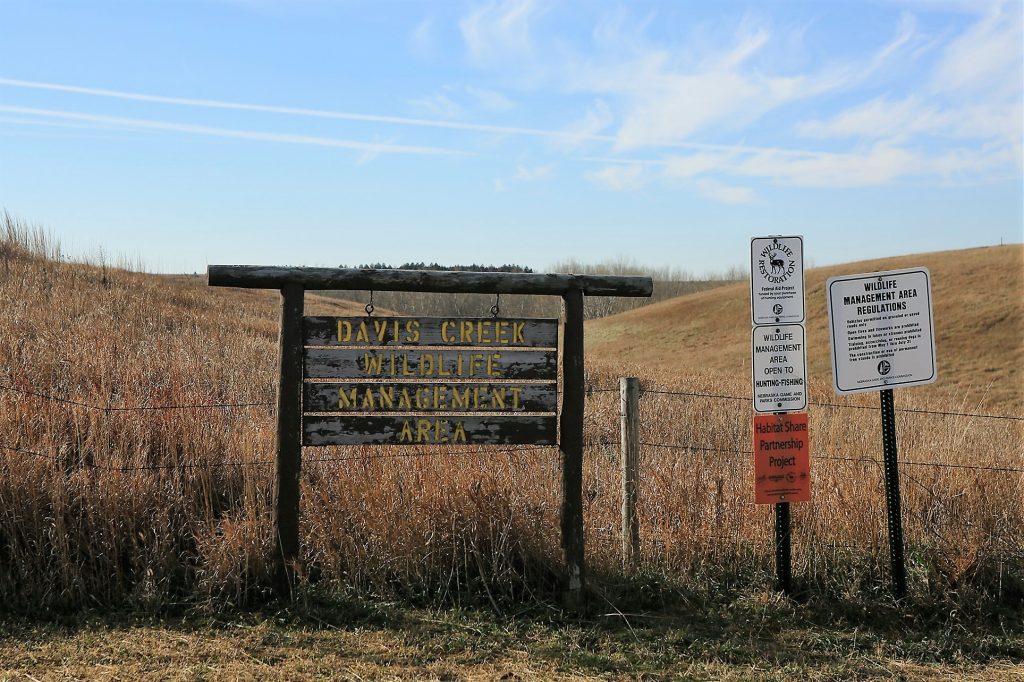
SCOUT, BUT DON’T OVERDO IT
Extensive and intense scouting before your actual hunt is necessary on public lands and is critical for success. However, be mindful of over-scouting an area or going to an area too often prior to the hunt. Some species, such as elk, do not tolerate much disturbance and will leave an area if disturbed even a small amount. Scouting during midday hours for big game is strongly suggested as it decreases the chances of hampering other hunters.
WHEN TO HUNT
Avoid busy times, hunt weekdays, if possible. The middle of the week is the optimum time to go. Sunday mornings and the time frames on Saturdays when the University of Nebraska-Lincoln Cornhuskers football team is playing on television both tend to be the lighter traffic periods on weekends for public hunting.
Be aware of your exact legal shooting hours for your desired game but hunt those hours other than first couple after sunrise and last couple before sunset to avoid a lot of hunting pressure. Keep in mind that late season hunting on public lands offers much potential with little competition in the field.
NOTE WEATHER CHANGES
Pay attention to the changes in weather when planning to hunt public lands in Nebraska! Remember, most wildlife reacts to swings in weather or fronts. Just a head of major weather shifts or just after them or even during a weather event can be a good time to be hunting anywhere on any state wildlife management area. This is because of the higher tendency of wildlife to be moving. Wind shifts, temperature drops, storm fronts, etc. all have an impact on game species. In Nebraska, keep in mind weather and conditions may change quickly, so pack accordingly.
PLAY THE WIND
Play the wind for species such as white-tailed and mule deer that are sensitive to the smell of human presence. Many big game species have a tremendous sense of smell which is the main part of their defense mechanism system. Besides practicing scent control, stay downwind or at least a good distance away from where you expect to see them.
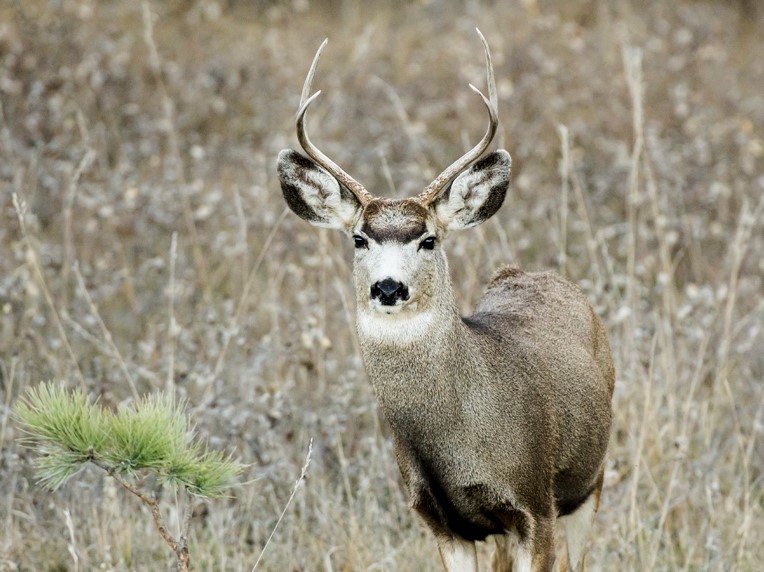
GET FAMILIAR WITH A FEW AREAS OR NEW AREAS
Give thought to hunting a few public areas and get very familiar with each of them. Try to alternate among areas when possible to prevent continual disruptions to an area or parts of an area. Also, look for new additions to state wildlife management areas or Open Fields and Waters tracts. These are brand new, prime hunting lands that probably haven’t been overutilized.
BE FLEXIBLE, ADAPTABLE
Be flexible and willing to adjust where you’re hunting. As things change, be ready to move to other locations within a public area or a head to a new area all together. Wildlife movement patterns and habitat choices become different as seasons undergo change and are influenced by hunting pressure.
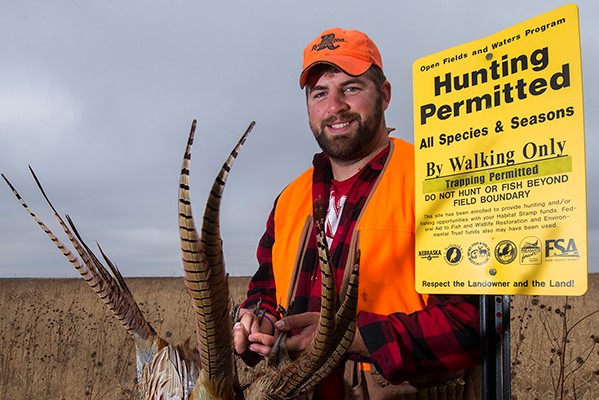
BE PHYSICALLY AND MENTALLY PREPARED
Most state wildlife management areas and public lands are “walk-in only.” Get physically and mentally prepared for the hunt. As bighorn sheep hunters say: “Get in Sheep Shape.” Good physical and mental conditioning will improve the chances of success on these publicly accessible walk-in areas.
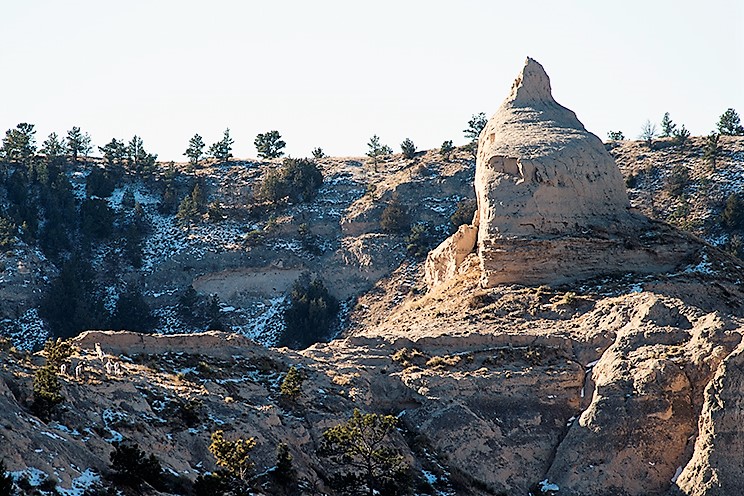
BRING EXCELLENT OPTICS
On your public lands hunt, employ excellent, higher line optics or spotting equipment. Name brand, waterproof/fog proof, high powered/high magnification binoculars and spotting scopes greatly minimize foot travel, and decrease the chances of spooking game, most notably in western Nebraska where there are larger expanses of public land.
With excellent optics, you will be able to watch from afar. Study the behavior of the animals, observe where they are headed, and then plan to make your move.
APPLY GOOD HUNTER ETHICS AND SAFETY
Apply good hunter ethics and safety when hunting public properties. A safe and ethical hunt is an effective hunt!
Adhere to all COVID-19 prevention restrictions and guidelines.
Park vehicles in established parking lots and if there are none available on the area, find a suitable parking spot along a county road and access the property by foot. Game carts and sleds are recommended for removing big game animals .
Always be a good steward of the land. Retrieve arrows and bolts that have been shot, pick up spent shot shells, rifle cartridges and any litter seen. Don’t damage wildlife habitat. Report violations.
Be courteous of other hunters and outdoor enthusiasts. There is no need to ruin someone else’s time in the outdoors! Make certain there is adequate spacing or a safe distance between you and another hunter or hunting group. If some other hunter is in your favorite spot, it will give you an opportunity to explore new options, perhaps find your next honey hole, or maybe, just maybe, get to know them!
Pat Molini, Wildlife Division Assistant Administrator at Nebraska Game and Parks Commission, says following COVID-19 prevention protocol, he finds at least introducing himself to another hunter in the same habitat he’s been hunting on a piece of public land often puts both parties at ease. “That introduction removes much of the negative feelings surrounding such a ‘close quarters’ hunt,” emphasizes Molini. “Knowing who you’re alongside in the field really relaxes the emotions.”
“One more thing,” Molini adds, “that I would suggest upland game bird hunters with dogs do on public areas is to offer to take other hunters who do not have dogs or who have not had success, and work or re-work the cover on that area with them for birds.” Put yourself in the “dogless” hunter’s boots, he remarks.
For safety in the field, always comply with blaze orange clothing requirements for big game hunting. It is also a good idea to wear some blaze orange when mobile and hunting upland or small game or walking to and from your hunting spots for waterfowl, turkey or other game species. With camouflaged hunting blinds, put some blaze orange tape on each side of the blind so it can be seen from all sides by other hunters. Additionally, in a moment before firing a shot at a game bird or animal, ask yourself: Is the shot flight path clear? Is that a legitimate target? And, what am I going to hit if I miss!
Some of Nebraska’s publicly accessible hunting land is actually on private property in our Open Fields and Waters (OFW) program and special consideration needs to be given to these sites. Be respectful of them by closing gates, not driving on fields or parking in the way of others and following the rules so farmers and ranchers continue to enroll their lands in programs like Open Fields and Waters for you to use!
DON’T GIVE UP!
Absolutely, do not give up on hunting public lands! Some publicly accessible areas can be quite an undertaking to hunt. But persistence and the utilization of these tips presented should boost your chances for success on public lands and add to a pleasant overall hunting trip.
To get a complete listing of Nebraska’s public hunting lands, click here.
I wish you the best of outdoor experiences! GW
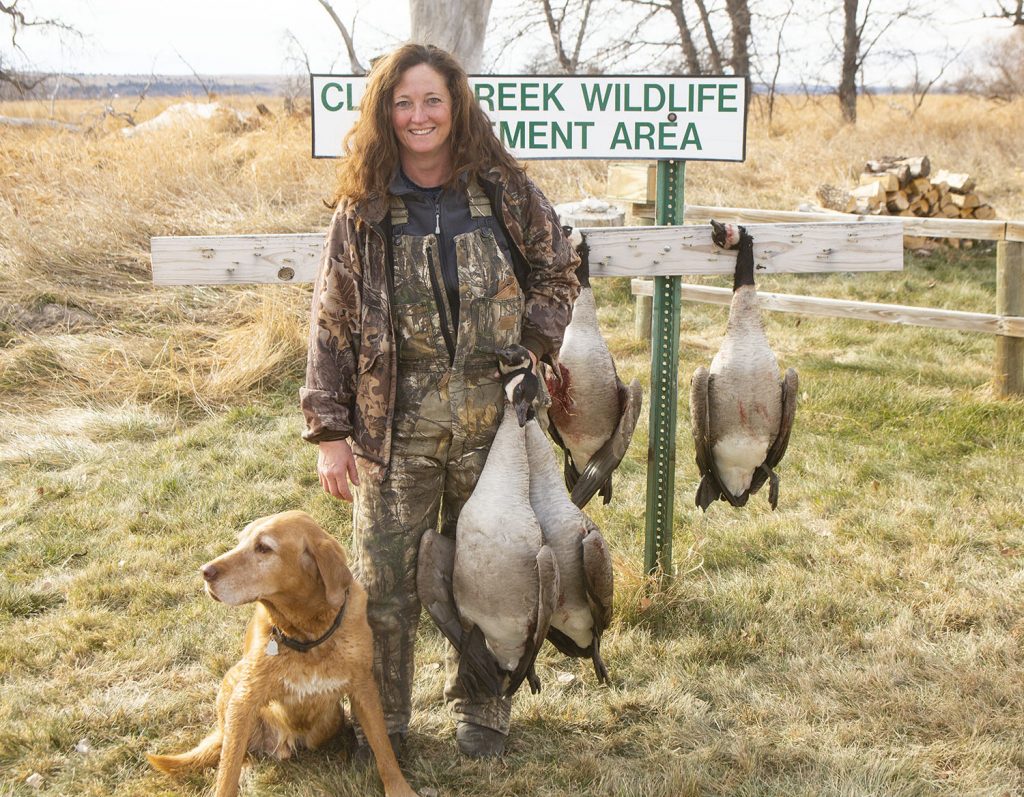
The post Tons of Tips for Hunting Public Lands appeared first on Nebraskaland Magazine.

